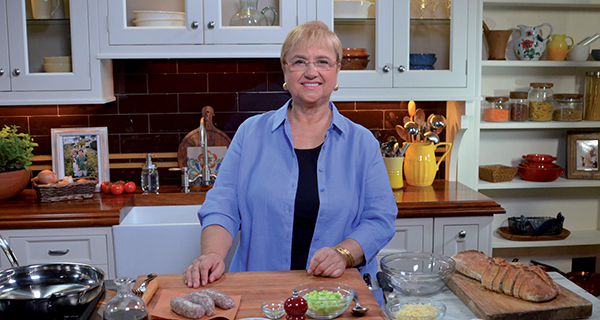
An unfaltering love affair. Passion for Italian cuisine burns high in America. No other country seduces more food lovers in the United States than Italy, says Lidia Bastianich. Considered by many as one of the most authoritative figures in the Italian culinary sector, Bastianich pioneered more than 40 years ago in exporting overseas the wealth of regional traditions from Italy. Her vision earned her success, popularity and reputation. Her career started in 1971, when the Istrian-born chef-restaurateur chose to open in Queens, in New York City, her first Italian restaurant (Bonavia). Ten years later, Bastianich moved to Manhattan, where she established her success with Felidia, the restaurant which soon became a destination for Italian specialties. Today, like yesterday, Italian food remains an incredibly fascinating story, unaltered by new food trends, but open to include them, as Bastianich tells ItalianFood.Net.
Lidia, is Italian cuisine still an undisputed presence in the US?
Italy is always very trendy. It knows how to evolve and keep abreast of the latest trends, including the most recent one, based on “light” products with low-calorie, organic, seasonal and deeply local Italian ingredients. Having said that, Italian strong flavors continue to be successful. I recently organized some dinners to promote products from Calabria. When I proposed a tasting of ‘nduja, many American guests initially found it too bold for their palate, but as they tried it, they soon came to appreciate it a lot. In the US there is strong demand for authentic Italian condiments: artichokes in olive oil, Sicilian capers, as well as mostarda with onions or made of fruit.
Who are your main importers of Italian products?
I have several. Those I work with the most are Ranieri Fine Foods, Manicaretti (oil and pasta), Alma Gourmet, Buon’Italia, C&D, while for prime Italian tubers I rely on Urbani Tartufi.
American consumers have become more knowledgeable and selective: what helped spread the knowledge of Italian food in the US?
Internet plays an important role. But not only. Today we know much more than in the past, also thanks to TV shows, cookbooks, travels and, last but not least, cooking demonstrations in restaurants.
Is it true that cooking is in vogue in the US?
It’s true especially at home, where cooking dinner is considered very fashionable by Americans. Some do it to impress their friends, others to strengthen family life. Let me say that in both cases Italian cuisine remains the main choice, despite competition from other countries.
“You shall have no other cuisine before the Italian”. Is this true also for you?
I have always been close to the Italian culinary culture, and I have never wanted to do any sort of contamination, or I would have lost my historic role.
A historic role is also played by your restaurant, Felidia. Are there any developments?
We have just completed the renovation of our location to create an even more modern and welcoming ambiance. The other important project this year is the inauguration of a new restaurant, based on Felidia’s model, which will soon open in Scottsdale, Arizona.
You had the opportunity to cook for the last two popes. Both proved to be fine gourmets. What recipes did you prepare for them?
For Benedict XVI, I proposed a menu of sauerkraut goulash and spätzel, followed by an entree of ravioli filled with grana cheese and grated pear. As dessert, since the guest was German, I prepared a strudel. With Pope Francis, I opted for a lighter menu. As entree, I cooked a risotto with spring vegetables, followed by capon broth with anolini and roasted sea bream, ending with peach crostata as dessert. Both confirmed to be two excellent gourmets.
